Available 24/7
Available 24/7
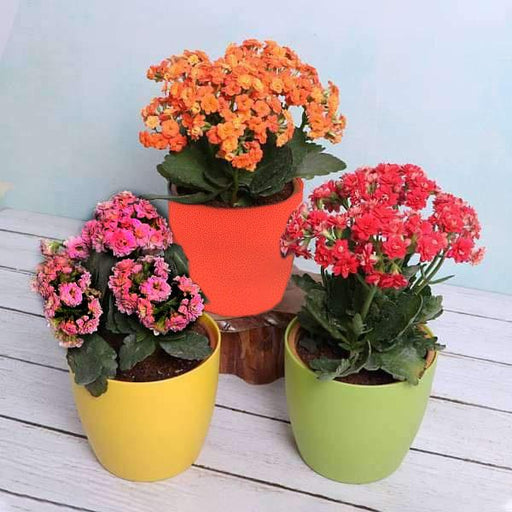
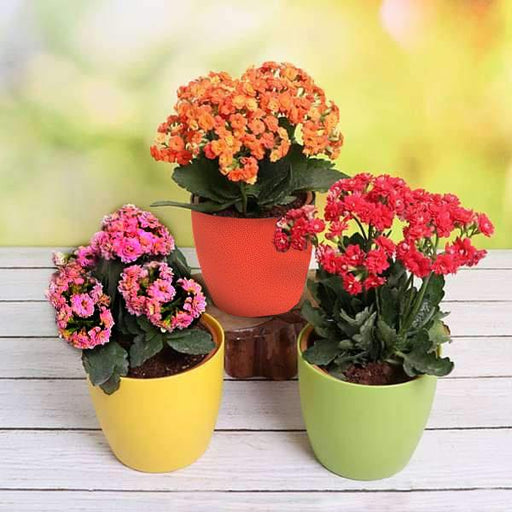 Save 10%
Save 10%
DescriptionThe Kalanchoes are thick leaved elegant flowering succulent houseplants. Make your home garden more vibrant and full of colors by bringi...
View full details Save 18%
Save 18%
DescriptionThis pack contains two 60 cm Spiral Stick Lucky Bamboo Plant + Glass vase + 250g white chip pebbels + 250g black chip pebbels.About Luc...
View full details

DescriptionIf the juvenile foliage along with a more compact plant is preferred, cut off all the climbing stems that develop, this will keep it bus...
View full details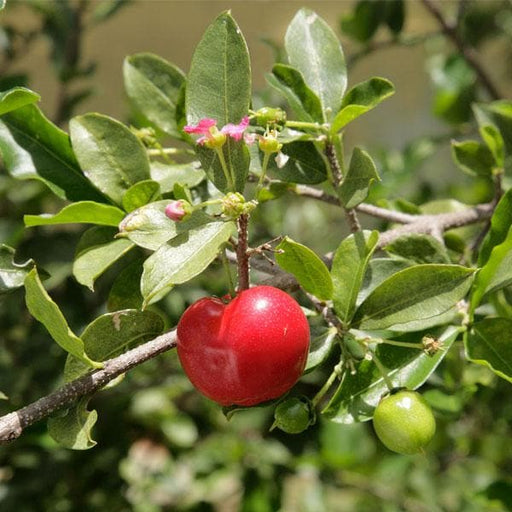 Save 15%
Save 15%
DescriptionGrowing Barbados Cherry is an easy way to add a tropical flair to your garden. When you know its important and how to care for Barbados ...
View full details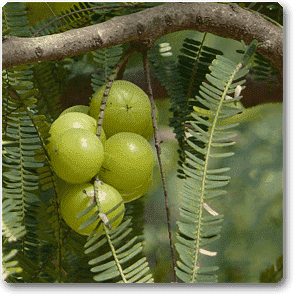 Save 17%
Save 17%
DescriptionImprove immunity of your all family member by growing a nutritious and vitamin rich an amazing Amla plant. Amla is a small to the medium...
View full details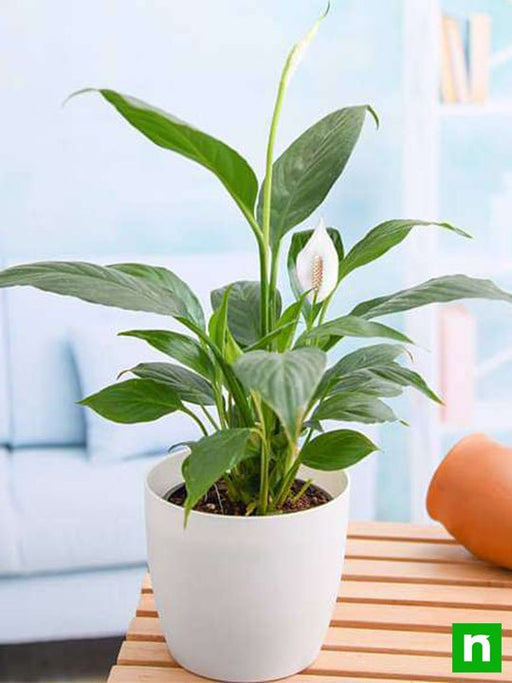
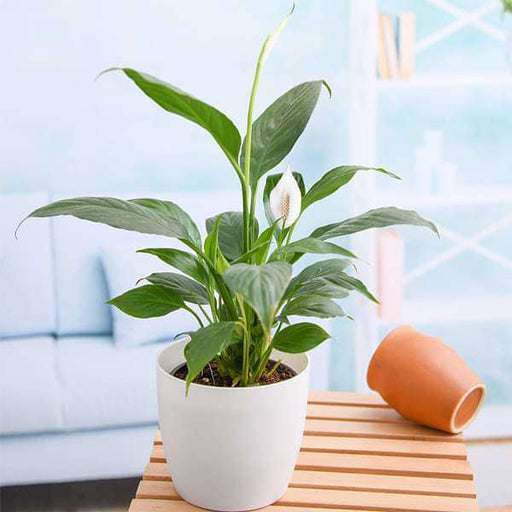 Save up to 15%
Save up to 15%
DescriptionPeace Lily Plant is a very popular and very rare indoor flowering houseplant. It is also an excellent air purifier plant.What makes it s...
View full details
 Save 20%
Save 20%
DescriptionFlowers make intimate connections they increase our connectivity with family and friends. Mogra plant is famously known as Jasmine flowe...
View full details
 Save 10%
Save 10%
DescriptionThe Kalanchoes are thick leaved elegant flowering succulent houseplants. Make your home garden more vibrant and full of colors by bringi...
View full details Save 45%
Save 45%
Description Pack of 4 succulents that are very easy to care for. A perfect pack to start growing plants worry-free. About You get 4 succulent plant...
View full details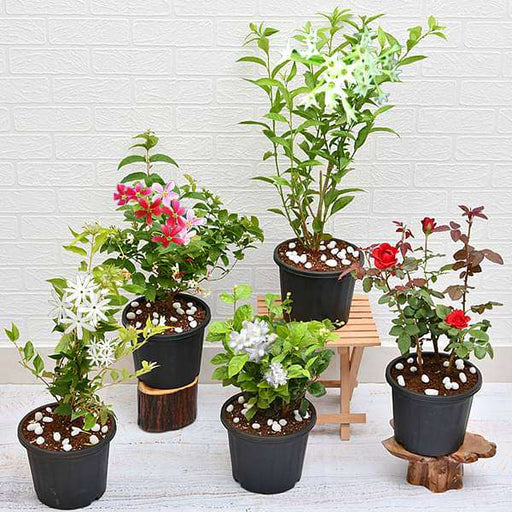 Save 12%
Save 12%
DescriptionAromatic plants bring into a room or house an often overlooked benefit. These plants have a pleasant scent.About You plant a hope when ...
View full details
 Save up to 50%
Save up to 50%
DescriptionIf you long for indoor greenery but have not succeeded with houseplants, consider these beautiful succulents. A perfect pack to start gr...
View full details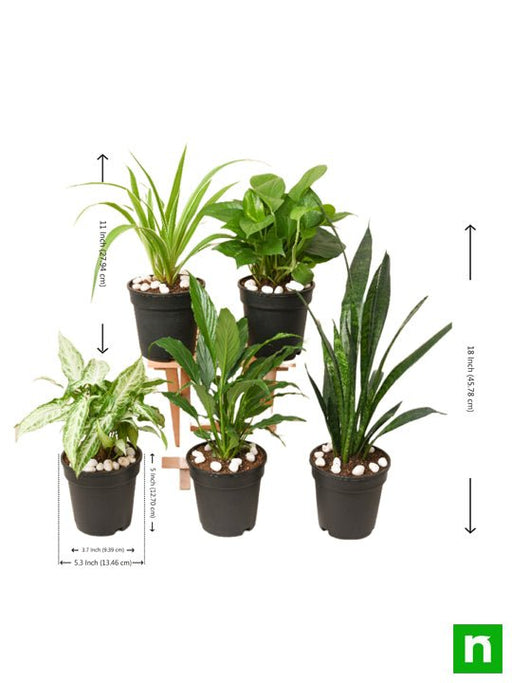
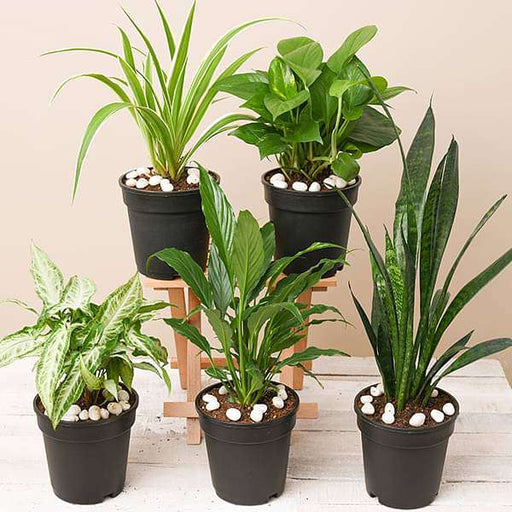 Save 21%
Save 21%
DescriptionThis plants pack contains amazing 5 houseplants + 5 Pots. Surround your home with these best pollution killer plants for a clean and hea...
View full details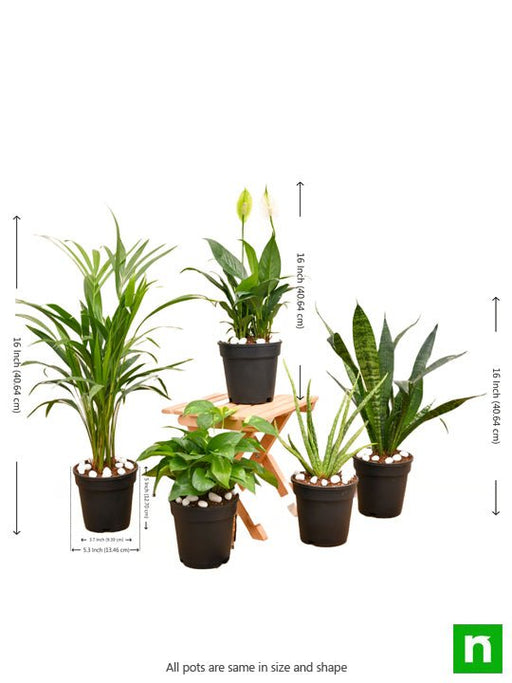
 Save 20%
Save 20%
DescriptionIf you or anyone from your family wants to breathe fresh air, cleaner air in their homes, this 5 plants pack purify the air around and r...
View full details
 Save 40%
Save 40%
DescriptionSet of 2 Bonsai Looking Grafted Adenium PlantsAbout You get 2 Bonsai looking hardy grafted Adenium plants in a single pack.Plants are k...
View full detailsGeranium Plants are a favourite among gardeners. They are quite easy to grow and are extremely colourful. Moreover, these flowers emit a lovely fragrance making them very pleasant. They brighten up space and level up the ambience with their fragrance.
About Geranium Plants
Geranium Plants can be grown as both indoor or annual flowers. The leaves of these plants rot quite quickly and thus while buying these plants make sure that you pay close attention to their leaves.
Geraniums are popular outdoor bedding plants, but they're also popular indoors and in hanging baskets. Geranium plants are simple to grow as long as you provide them with what they require. Geranium plants have varying requirements depending on location and how they are grown. Geraniums require a lot of light to bloom inside, although they may take moderate light.
A regular dose of fertilizer or pest attack is very important for a Geranium Plant. Make sure that when you pot these plants, the soil is well-drained. Regular 4-6 hours of sunlight is a must for this plant.
Geranium Plant - Uses
A scented variety of Geranium Plant is also available. They are used in the form of potted herbs as well as in flower gardens too. Traditionally, geranium has also been used as an astringent and in the treatment of ulcers.
How to take care of a Geranium Plant?
It is very important to allow a proper interval between the watering times so that Geranium Plant can bloom fully. During the winter season, these plants require much less water. Even then you must cut and prune the deadheads of these plants so that they bloom fully.
Buy Geranium Plant from Nursery Live
Nursery Live has the biggest collection of plants. A huge variety of plants like indoor plants, outdoor plants, vertical plants, air purifier plants, nakshatra plants are available at this website. Get a Geranium Plant from this one-stop destination at never before seen affordable cost. These plants will be safely delivered at your doorstep.
There are many types of geranium plants, including zonal geraniums, ivy geraniums, scented geraniums, and more. Each type has its own unique characteristics and growing requirements.
Growing geranium plants from cuttings is a great way to propagate new plants. To do so, simply take a cutting from a healthy plant and place it in water or soil until it forms roots.
Caring for geranium plants involves regular watering, fertilizing, and pruning as needed. It's also important to protect the plants from pests and disease.
Overwintering geranium plants involves bringing them indoors and providing the proper growing conditions during the winter months. This can help ensure that the plants survive and thrive in the spring.
In addition to growing from cuttings, geranium plants can also be propagated from seeds or by division. It's important to follow proper propagation techniques and provide the right growing conditions.
Deadheading geranium plants involves removing spent blooms to promote new growth and a longer blooming period. It's important to use the proper tools and techniques to avoid damaging the plant.
Pruning geranium plants involves removing dead or diseased branches, as well as shaping the plant to promote healthy growth and blooms. It's important to prune at the right time of year and to use the proper tools.
Fertilizing geranium plants involves providing them with the right balance of nutrients to promote healthy growth and blooms. It's important to follow the manufacturer's instructions and avoid over-fertilizing, which can damage the plants.
Watering geranium plants involves providing them with regular, deep watering to promote healthy root growth. It's important to avoid over-watering, which can lead to root rot.
Planting geranium plants involves selecting the right location, preparing the soil, and placing the plants in the ground or in containers. It's important to provide the proper growing conditions to ensure healthy growth and blooms.
Dividing geranium plants involves separating the root ball into multiple plants, which can be replanted in different locations. It's important to follow proper division techniques and provide the right growing conditions.
Controlling pests and disease in geranium plants involves regular inspection, proper watering and fertilizing, and using organic pest control methods when necessary.
Storing geranium plants for winter involves bringing them indoors and providing the proper growing conditions to help them survive until spring. It's important to follow proper storage techniques and avoid over-watering.
Choosing the right geranium plant for your garden involves considering the size of your space, the climate in your area, and your specific preferences for color and bloom time.
Pruning geranium plants for winter involves removing dead or diseased branches and shaping the plant to promote healthy growth during the winter months.
Transplanting geranium plants involves carefully digging up the plant and its roots and replanting it in a new location with well-draining soil. It's important to follow proper transplanting techniques to avoid damaging the plant.
Protecting geranium plants from frost involves providing them with proper watering and fertilizing, as well as covering them with blankets or other protective coverings during cold weather.
Choosing the right container for geranium plants involves selecting a container that is large enough to accommodate the root ball and providing proper drainage to avoid over-watering.
Growing geranium plants in hanging baskets involves selecting a hanging basket that is large enough to accommodate the plant and providing proper watering and fertilizing to promote healthy growth.
Pruning geranium plants for a bushier appearance involves cutting back the plant to promote new growth and a fuller, more compact appearance. It's important to prune at the right time of year and to use the proper tools and techniques.
Geraniums are a genus of flowering plants that belong to the family Geraniaceae, while Pelargoniums belong to the family Geraniaceae but are commonly referred to as Geraniums. The key difference between the two is that Geraniums have symmetrical flowers, while Pelargoniums have asymmetrical flowers.
Geraniums require well-draining soil, regular watering, and plenty of sunlight to thrive. They also benefit from occasional fertilization and pruning.
Geraniums prefer well-draining soil that is rich in organic matter. A mix of sand, perlite, and peat moss is ideal.
Geraniums require regular watering, but it's important not to overwater them. Wait until the soil is dry to the touch before watering, and be sure to water at the base of the plant rather than from above.
Geraniums benefit from a balanced fertilizer that is high in phosphorus, such as a 10-10-10 or 5-10-5 formula.
Yes, Geraniums can be grown in containers as long as the container has drainage holes and the soil is well-draining.
Geraniums can be propagated through stem cuttings, division, or from seed.
Geraniums should be pruned in the spring or fall to encourage new growth and maintain their shape.
Regularly inspect your plants for signs of pests or diseases and promptly treat any issues that arise. You can also prevent pests and diseases by keeping your plants healthy through proper watering, fertilization, and pruning.
Geraniums are typically considered annuals in colder climates, but they can survive mild winters if protected from frost.
Before winter, cut back your Geraniums to about half their size, and move them indoors or to a protected area.
Geraniums benefit from fertilization every 4-6 weeks during the growing season.
Yes, Geraniums can be grown from seed. Sow the seeds indoors in the spring and transplant them outdoors after the last frost.
Geraniums require at least 6 hours of sunlight per day to thrive.
To deadhead Geraniums, pinch or cut off the spent blooms just below the flower head.
To prune Geraniums, use clean, sharp shears to cut back any leggy or overgrown growth, and remove any dead or damaged branches.
To transplant Geraniums, gently remove the plant from its current pot or location and place it in a new location with fresh soil.
To repot Geraniums, gently remove the plant from its current pot and place it in a new pot that is slightly larger, using fresh, well-draining soil.
Geraniums typically bloom from spring to fall, but the exact blooming period can vary depending on the variety and growing conditions.
To control the size of Geraniums, regularly prune back any leggy or overgrown growth and remove any dead or damaged branches.
Consider factors such as the plant's size, bloom color, and growing habits when choosing a Geranium variety for your garden.
During hot weather, be sure to water your Geraniums regularly and provide them with some shade during the hottest parts of the day.
Yes, Geraniums can be grown indoors as long as they receive plenty of sunlight and are grown in well-draining soil.
Before planting your Geraniums outdoors, be sure to harden them off by gradually exposing them to outdoor conditions over the course of a week or two.
Planting companion plants such as bee balm, lavender, or salvia can help attract pollinators to your Geraniums.
Some Geranium species are used in cooking and medicinal purposes, but it's important to consult a professional before consuming or using any plant for such purposes.
To overwinter Geraniums indoors, move them to a cool, dark area such as a basement or garage and reduce watering until the leaves start to turn yellow.
Yes, Geraniums can be grown from stem cuttings taken in the spring or summer.
To prevent Geraniums from becoming leggy, pinch back the tips of the plant regularly and provide them with plenty of sunlight.
Check the soil moisture level by sticking your finger into the soil. If it feels dry to the touch, it's time to water your Geraniums.